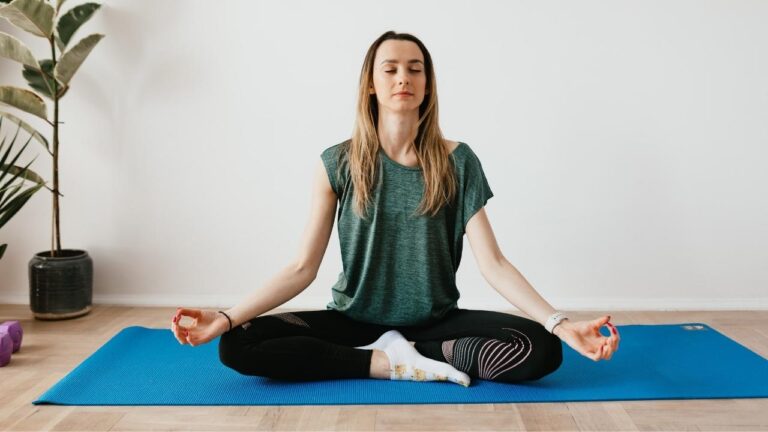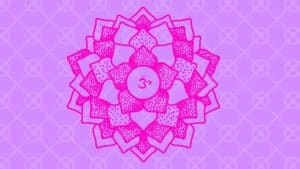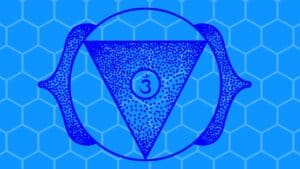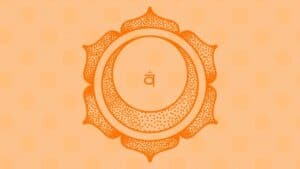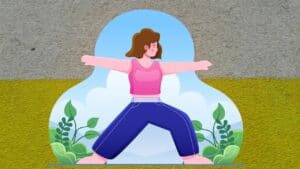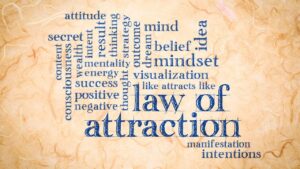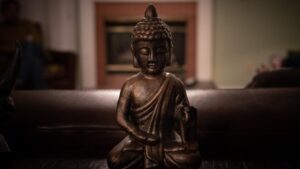Breathing is the most natural thing in the world, but it’s difficult to do correctly when you are stressed or anxious. While Yoga (Asanas) have mostly health benefits, it’s proved that breathing exercises like Pranayama have both mental and physical benefits.
The word pranayama comes from two Sanskrit words: “prana” which means “life force” or “energy” and “yama” which means “to control”. Pranayama is the practice of consciously regulating the breath by focusing on its entry and exit. It is a yogic breathing technique that is used to control your breath and the life force in the body.
The term breath control is often used when referring to pranayama. In pranayama, we control the frequency, duration and timing of every breath we breathe in during the practice. It is a way to create harmony in the body and mind by balancing the air we breathe, and is relatively safe to learn.
Pranayama And The Mind
When the breath wavers, so does the mind. And when the breath becomes steady, so does the mind. We have seen that when we get angry, our breath becomes faster. Conversely, when we are at peace, the breathing is slow and gentle. Thus, there is a direct correlation between breath and the mind.
Pranayama is a great way to improve the mental health as it reduces stress and anxiety, while also improving focus, concentration, and memory. Studies show that it reduces anxiety, depression and stress levels, as well as it acts as a catalyst to boost mood.
Pranayama And The Body
It is a type of breathing exercise that helps to cleanse the lungs and increase the energy levels.
There are many benefits of pranayama for the body, including:
– Improving lung capacity and respiratory function
– Increasing oxygen intake and thus purifying the blood
– Improving sleep quality
– Promoting weight loss
– Removing any accumulated toxins in the respiratory system
– Removing any excess acidity from the body
– Increasing digestion, vigor and vitality
– Slowing down ageing, when we lengthen the time taken by each in and out breath
Different Pranayama Practices
Asanas or Yoga postures are endless, however there are a few pranayama practices. Below is the list covering most and important breathing exercises, and a few of their benefits.
- Ujjayi Pranayama – It deepens the breathing, smoothening the respiratory muscles. It is also very useful in stilling the fear.
- Viloma Pranayama – It helps in recovering from fatigue and weakness. The practice of this pranayama brings lightness in the body.
- Bhastrika Pranayama – It activates the abdominal muscles and improves digestion. It also helps in draining the sinuses.
- Kapalbhati – The benefits of this pranayama are like those of Bhastrika Pranayama. Besides them, it also brings a glow to the skin.
- Sitali Pranayama – It cools the body and soothes the eyes and ears.
- Sitakari – The benefits of this pranayama are like those of Sitali Pranayama.
- Anuloma Pranayama – This pranayama cleans the nasal passages. It is good for controlling high blood pressure. It also sharpens our awareness and thus concentration.
- Pratilomana Pranayama – It is very effective in removing sluggishness and controlling mood swings.
- Bhramari Pranayama – It gives better sleep and is especially useful for those suffering from insomnia.
- Surya Bedhana – It is useful for increasing heat in the body and thus aids digestion. It is also beneficial in cleaning the sinuses.
- Chandra Bedhana – It cools the system and is useful for people suffering from low blood pressure.
- Nadi Shodhana Pranayama – In this pranayama, the blood receives a larger supply of blood. This purifies the nerves, and the mind becomes still and calm.
Some Useful Tips Before We Look At The Practices
-
- Breathing should always be through the nose, unless stated otherwise.
- Practice for a minimum of 15 minutes per day.
- Best time to practice is early in the morning before breakfast.
- Keep a blanket underneath and sit with your legs crossed. This prevents the energy from dissipating and the body absorbs the maximum amount of “prana” during the practice.
- Always keep the spine erect. This increases awareness and also ensures that the energy flows freely in the body.
- Keep the eyes closed to shut out any distractions from outside.
- All breathing exercises start with exhalation. One should exhale the impure air from the lungs before breathing in pure air for the practice of pranayama.
How To Get Started?
Since breathing is important but an involuntary function of our body, most of us are unaware of our breathing pattern and we tend to shallow breathe. Thus, the first step is to become aware of our breathing and to master the art of deep breathing. Deep breathing is a technique that comprises taking slow, deep breaths in while being completely aware of the process.
Here is a schedule to aid you in preparing the mind and body for Pranayama practices:
Week 1
Becoming aware of each inhalation and exhalation. For doing so, you can either lie down or sit cross-legged. Gently become aware of the sensations in the lungs. As you inhale, you will find the lungs expanding, and as you exhale, you will find the lungs contracting. Become aware of this expansion-contraction of the lungs during the inhalation-exhalation process. Your inhalation and exhalation should ideally be smooth and continuous, with no jerks.
Keep a note of the time taken for one round of your inhalation-exhalation. This will act as a reference as you progress ahead on your journey.
Week 2
Once you have developed the awareness of the breath by practicing for a week, move on to the next stage of lengthening the exhalation. So if you are inhaling for say 2 seconds, exhale for 3-4 seconds. Practice this for a week.
Week 3
Now, move to the next stage of lengthening the inhalation process. So, if you are exhaling for say 2 seconds, inhale for 3-4 seconds. Again, practice this for a week.
Week 4
Last step is to lengthen both your inhalation and exhalation. So in week 1, if you inhaled and exhaled for say 2 seconds each, then increase your inhalation and exhalation to 3-4 seconds each. Do this for a week.
Thus, once you have prepared the body in about a month’s time, you can start with any of the pranayama practices given above. Every breathing exercise has detailed steps on how it needs to be performed, along with certain cautionary notes. It is essential to have a thorough understanding of the same before undertaking any of the breathing exercises.
All the best on your journey!!!

